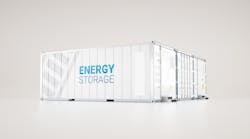Agility in Managing the Grid: The Case for Batteries
With just over 9 GW deployed in 2018 worldwide, grid battery storage remains a small business today, but recent developments demonstrate that the sector is thriving. In the United States in 2018, more than 300-MW battery storage was deployed, led by California. Globally, network operators are testing projects in Italy, the United Kingdom, Spain, and other regions. In Australia, China, United Arab Emirates (UAE), and the United States, large energy storage projects are ready to deliver more than 100 MW of capacity for up to six hours.
While the benefits of deploying battery technologies for grid management are clear, there has been limited development of the global grid-battery market because of three main reasons:
1. Costs
Costs of batteries are still too high for most grid applications to be viable, other than where local regulations incentivize deployment. However, cost of battery storage continues to drop year after year, largely because of battery manufacturing for electric vehicles (EVs). We expect the cost to fall within the US$100/kWh range by the mid-2020s. This cost decrease, combined with a stacking of revenue streams and battery applications, will lead to a significant proliferation of positive business cases.
2. Regulations
In most regions, regulatory barriers prevent network operators from owning and operating battery storage, except in Italy, where the regulatory framework has been amended. System operators are therefore restrained from developing battery-storage solutions beyond pilot projects. It is imperative that clear regulatory frameworks and market mechanisms are established to allow the development of storage assets with clear targets for deployment. For example, the California Public Utilities Commission (CPUC) requires utilities to build energy-storage capacity and has clarified the market rules for battery aggregation. Following these moves, California’s largest utilities have procured or are seeking approval to procure almost 1500 MW, as of summer 2018.
There is also a strong argument for providing direct incentives for use of battery storage to catalyze development and lower costs which has worked in the renewables sector. Consider the contrast between Germany and Spain, two European countries with relatively high renewables penetrations. In Germany, where incentives are provided, the residential storage market is booming and reducing stress on the grid. In Spain, battery deployment remains very limited.
3. Alternatives
Batteries are far from being the only option for balancing supply in a distributed energy grid with high renewable use. Other approaches include:
- Good regional and international interconnectivity decreases the intermittency of renewables over large areas and allows for a greater mix of power sources to be used.
- Fast-start and rapid ramp-up fossil-fuel plants have also played a key role in meeting peak power supply requirements and will remain important in the future.
- Demand side response (DSR) has already been widely tested as a way to balance the grid by incentivizing end-consumers to reduce their consumption or switch to behind-the-meter generators in response to grid requirements.
Batteries: For Utilities and Operators
With considerable uncertainty in the details, timing, and extent of the role batteries will play in grid management, how should network operators and utilities position themselves to take advantage of opportunities and react to changes in the marketplace?
- Adopt a flexible approach to business models and partnerships: Utilities can contract with third-party aggregators of distributed storage assets to provide back-up for renewable generation sources. An extension of this is the virtual power plant (VPP) model, which the German, French, Belgian, and U.K. markets have been incubating for the past five years and has proved to be viable as battery costs decrease and strong players such as Tesla enter the market.
- Look to serve multiple applications and stack revenue streams from the same asset: Utilities and power producers can use battery storage to decrease exposure to imbalance charges from renewables intermittency; optimize asset production and sales in the wholesale market based on market signals (arbitrage); capture revenues from ancillary services and capacity mechanisms; support industrial or consumer groups in avoiding system charges where these are calculated based on consumption at peak periods; and negotiate to receive a portion of these savings.
- Develop a portfolio of storage assets and technologies: Although it is not clear which battery technology will win for most grid applications, lithium-ion looks to be the most likely technology to succeed. Market players should not, however, rely on one particular technology — and the path forward is not just about the battery technology. Other solutions such as sensors, communication software, and generation will also be important. E.ON, for instance, released its home storage system combining multiple technologies in Germany in April 2016.
- Use storage as a differentiator: Utilities can leverage batteries as a differentiator in the retail market and as a provider of flexibility services to TSOs. Engie is developing its 20 MW/20 MWh energy-storage park in Belgium to provide R1 ancillary services. It will then develop a pool of batteries that can be rented for applications such as industrial sites, for which it can provide demand response. Benelux utility, Eneco, has been supplying the Tesla Powerwall to its customers since 2016 and has expanded its services to CrowdNett with the support of Tesla, SolarEdge, and Ampard, whose software allows the remote control of residential batteries, facilitating provision of ancillary services.
Batteries: For Industrials and Investors
Industrials and large companies may have a truly compelling case to invest in battery storage, whether because they need to cope with power-outage issues (for example, in South Asia and Africa), have committed to sourcing 100% power from renewables (for example, Apple, Facebook, Google among 176 other global companies), or need to pay high tariffs for their electricity (such as in Italy).
Industrials have the option of outsourcing their battery-storage operations to power utilities or aggregators, or collaborating with DSOs and TSOs, potentially earning extra revenue by providing ancillary services to the grid (such as voltage stability or frequency regulation).
While we see few applications of this business model to date, it can provide a particularly good alternative for system operators that are limited to their roles in storage activities. Battery storage is a relatively young industry and without track records of five or more years of real returns, project owners have difficulty securing financing. That may be changing, however, as Advanced Microgrid Solutions and Stem recently secured significant capital for new storage project financing (US$200 million and US$100 million, respectively). The emergence of leasing models can also become attractive to different types of investors, as was the case for the meter industry, representing low risks for stable revenues.
Insight for the Executive
We recommend that executives looking to invest successfully keep in mind the following guidelines:
- Tailor the solution to the local market conditions, such as market characteristics (renewables penetration, generation mix, system size), regulatory framework (revenue models, operational requirements), and incentives and commercial signals.
- Explore how to benefit from a combination of applications, as it is essential to stack revenue streams to build a positive business case.
- Influence energy-market design (such as the definition of ancillary services, access to grid services, and the possibility of stacked services) to make the most of battery storage and enhance the business case.


